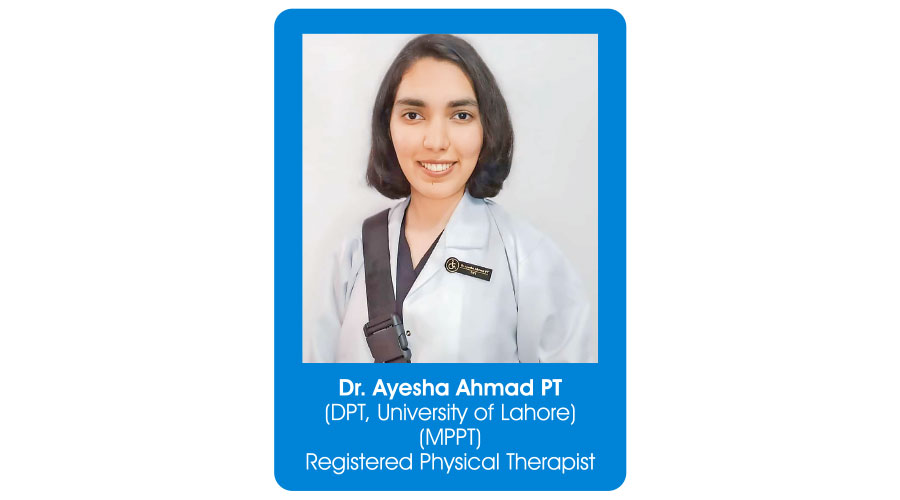ASK A PHYSICAL THERAPIST
- 04 May - 10 May, 2024

A: The patient requires a detailed examination but it seems that she has a condition known as “Ptophobia” which is the fear of falling while standing or walking. There can be a reduction in balance efficacy and the patient may believe that any activity he performs is going to result in a fall, this leads to reluctance and hesitancy.
There is an increased chance that patients who have a previous history of falls lose confidence in themselves, and have weakened muscles and deconditioning due to limitation in activity, increased risk of falls, and fear of falls. The patient should be assessed for poor vision.

It can also happen that a person has not experienced a fall before but knows someone who experienced it and sustained serious injuries; it can also lead to the development of fear in the patient. Reduction in activity level can cause muscular weakness. The patient may also have anxiety and depression. A physical therapist plans a program based on strengthening and balance training along with building self-efficacy and coordinating care with other healthcare providers.
A: Autism Spectrum Disorder is a complex neurological and developmental condition. It affects the functioning of the brain, communication, and social skills of the child. It affects how a child interacts with his environment. Autism has been regarded as a life-long condition and it cannot be cured. However, severity may decrease through special education and treatments. A proper diagnosis is made by a medical practitioner. Various genetic and environmental factors play a role in the case.
Signs of ASD include Not responding to their own name, Not pointing at objects / things of interest, Avoiding eye contact, Displaying a preference to be alone, Not playing "pretend" or "make-believe" games, lack of speech / delayed speech, Having difficulty understanding or showing that they understand another person's feelings or their own feelings, Getting upset by small changes, Providing unrelated answers to questions, Obsessive interests, Having no social skills or fewer social skills than expected, Resisting or avoiding physical contact, Having little safety or danger awareness, Reversing pronouns - for example, they may say "I" instead of "you", struggling with communicating their needs and desires (social impairments), interpreting other people, processing sensory and cognitive information, repetitive behavior, Extreme anxiety / unusual phobias, Lining up objects and toys, Always playing with toys the same way every time, Causing injury to self, Lack of fear or excessive fear, Short attention span, Unusual sleeping / eating habits

Risk factors include hereditary factors, parental history of psychiatric disorders, pre-term births, increased parental age (both maternal and paternal age), and history of autoimmune disease in the mother (diabetes, thyroid disease, and psoriasis have been suggested, but research findings are inconsistent), prenatal exposure to thalidomide and valproic acid, maternal infection, immune activation during pregnancy, obstetric factors, including uterine bleeding, caesarian section, low birth weight, preterm delivery, low Apgar scores.
There can be developmental delays in the patient and it can affect the motor skills and activity. Children with ASD may appear awkward in their motor skills and movement. Many of these coordination problems when combined with communication, social skills, and behavioral problems can lead to more complex learning difficulties in later development such as playground and sporting skills. A physical therapist works in coordination with other medical practitioners and team members in the case. A PT focuses on the posture of the child and also prevents misalignments of various structures. Physiotherapy sessions are very structured in nature. Teaching them to be comfortable and competent in their bodies is an essential part of the treatment. Age-appropriate activities are included in the plan for the child. A physical therapist helps the child in developing motor skills or helps in compensation.
COMMENTS